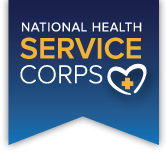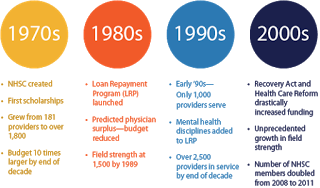Medicine
Forty years ago, Eric Redman's classic book The Dance of Legislation provided a compelling "insider's account" of how the U.S. Senate worked by following the winding path of Public Law 91-623 (The Emergency Health Personnel Act of 1970), which created the National Health Service Corps (NHSC). Envisioned by Seattle pediatrician Abraham Bergman, MD as a way to recruit idealistic young physicians to "doctor deficient" communities throughout the U.S., the NHSC and its authorizing legislation successfully navigated a perilous policymaking process, an unsupportive Administration, and the threat of a pocket veto to become law in the final days of the 91st Congress. Later legislation added scholarship and loan repayment programs to the NHSC, and recent funding increases provided by the American Recovery and Reinvestment Act and the Affordable Care Act have tripled the size of the corps from 3600 to nearly 10,000.

In this month's Georgetown University Health Policy Seminar, we critically evaluated the accomplishments and limitations of the NHSC in improving access to care for the medically underserved. A literature review by Dr. Robert Politzer and colleagues in 2000 found mixed results: although the NHSC relieved health professional shortages in many communities over the years, physicians often did not stay in these communities beyond their 2-year service commitments, and the neediest areas were actually less likely to be successful in recruiting clinicians. The absence of a service analogous to the National Resident Matching Program meant that the NHSC placement process favored well-organized communities with more resources, rather than matching greater numbers of clinicians to areas with greater needs. At around the same time, a commentary by Dr. Fitzhugh Mullan advocated for a more expansive role for the NHSC in the 21st century, including options to practice community-oriented primary care, in urban hospitals, in public health, and in prison and international health settings.

Currently, the collective impacts of the individual and employer mandates and guaranteed insurance issue provisions of the Affordable Care Act on underserved communities remain uncertain. Will the implementation of the ACA make the NHSC less necessary, or will projected gaps in coverage among immigrants and Medicaid-ineligible adults continue to leave many areas with health professional shortages? Physicians of all ethnic and cultural backgrounds tend to migrate to affluent areas, and retirements of small-town family doctors may end up relegating some communities to welcoming a new crop of primary care clinicians every few years. Are there alternative health policies that could attract primary care and subspecialist physicians to areas where they are most needed?
**
The above post first appeared on The Health Policy Exchange.
- Primary Care, Medical School Debt, And Us Health Needs: Analysis From The Graham Center
. Bob Phillips MD, Executive Director of the Robert Graham Center, the American Academy of Family Physicians’ (AAFP) DC-based policy center, gave one of the plenary speeches at the recent annual meeting of the Society of Teachers of Family Medicine...
- Primary Care Grants From Hrsa: Not Enough, Not Wisely Done
. In late September, the Health Resources Services Administration (HRSA), a branch of the federal Department of Health and Human Services (HHS) released the funding announcements for its grants support a variety of educational programs for academic year...
- Ppaca, The New Health Reform Law: How Will It Affect The Public's Health And Primary Care?
. A great deal remains to be done before any of the parts of the new health reform law, the Patient Protection and Affordable Care Act (PL 111-148), begins to affect people. Regulations have to be written, appropriations (in many cases, where they are...
- Yes, Family Medicine Is An Affordable Career Choice
The inexorable yearly rise of medical school tuition has led to corresponding increases in medical student debt. According to the American Medical Association, 86 percent of graduating medical students in 2011 had loans to repay, and their average...
- No Country For Health Care: Rural Medicine In America
Thanks to Dr. Fitzhugh Mullan and colleagues at the Medical Education Futures Study for letting me know about a terrific 4-part series of articles by Emily Ramshaw of the Texas Tribune. In "No Country for Health Care," Ramshaw documents the severe difficulties...
Medicine
Caring for the underserved: the National Health Service Corps
Forty years ago, Eric Redman's classic book The Dance of Legislation provided a compelling "insider's account" of how the U.S. Senate worked by following the winding path of Public Law 91-623 (The Emergency Health Personnel Act of 1970), which created the National Health Service Corps (NHSC). Envisioned by Seattle pediatrician Abraham Bergman, MD as a way to recruit idealistic young physicians to "doctor deficient" communities throughout the U.S., the NHSC and its authorizing legislation successfully navigated a perilous policymaking process, an unsupportive Administration, and the threat of a pocket veto to become law in the final days of the 91st Congress. Later legislation added scholarship and loan repayment programs to the NHSC, and recent funding increases provided by the American Recovery and Reinvestment Act and the Affordable Care Act have tripled the size of the corps from 3600 to nearly 10,000.

In this month's Georgetown University Health Policy Seminar, we critically evaluated the accomplishments and limitations of the NHSC in improving access to care for the medically underserved. A literature review by Dr. Robert Politzer and colleagues in 2000 found mixed results: although the NHSC relieved health professional shortages in many communities over the years, physicians often did not stay in these communities beyond their 2-year service commitments, and the neediest areas were actually less likely to be successful in recruiting clinicians. The absence of a service analogous to the National Resident Matching Program meant that the NHSC placement process favored well-organized communities with more resources, rather than matching greater numbers of clinicians to areas with greater needs. At around the same time, a commentary by Dr. Fitzhugh Mullan advocated for a more expansive role for the NHSC in the 21st century, including options to practice community-oriented primary care, in urban hospitals, in public health, and in prison and international health settings.

Currently, the collective impacts of the individual and employer mandates and guaranteed insurance issue provisions of the Affordable Care Act on underserved communities remain uncertain. Will the implementation of the ACA make the NHSC less necessary, or will projected gaps in coverage among immigrants and Medicaid-ineligible adults continue to leave many areas with health professional shortages? Physicians of all ethnic and cultural backgrounds tend to migrate to affluent areas, and retirements of small-town family doctors may end up relegating some communities to welcoming a new crop of primary care clinicians every few years. Are there alternative health policies that could attract primary care and subspecialist physicians to areas where they are most needed?
**
The above post first appeared on The Health Policy Exchange.
- Primary Care, Medical School Debt, And Us Health Needs: Analysis From The Graham Center
. Bob Phillips MD, Executive Director of the Robert Graham Center, the American Academy of Family Physicians’ (AAFP) DC-based policy center, gave one of the plenary speeches at the recent annual meeting of the Society of Teachers of Family Medicine...
- Primary Care Grants From Hrsa: Not Enough, Not Wisely Done
. In late September, the Health Resources Services Administration (HRSA), a branch of the federal Department of Health and Human Services (HHS) released the funding announcements for its grants support a variety of educational programs for academic year...
- Ppaca, The New Health Reform Law: How Will It Affect The Public's Health And Primary Care?
. A great deal remains to be done before any of the parts of the new health reform law, the Patient Protection and Affordable Care Act (PL 111-148), begins to affect people. Regulations have to be written, appropriations (in many cases, where they are...
- Yes, Family Medicine Is An Affordable Career Choice
The inexorable yearly rise of medical school tuition has led to corresponding increases in medical student debt. According to the American Medical Association, 86 percent of graduating medical students in 2011 had loans to repay, and their average...
- No Country For Health Care: Rural Medicine In America
Thanks to Dr. Fitzhugh Mullan and colleagues at the Medical Education Futures Study for letting me know about a terrific 4-part series of articles by Emily Ramshaw of the Texas Tribune. In "No Country for Health Care," Ramshaw documents the severe difficulties...
